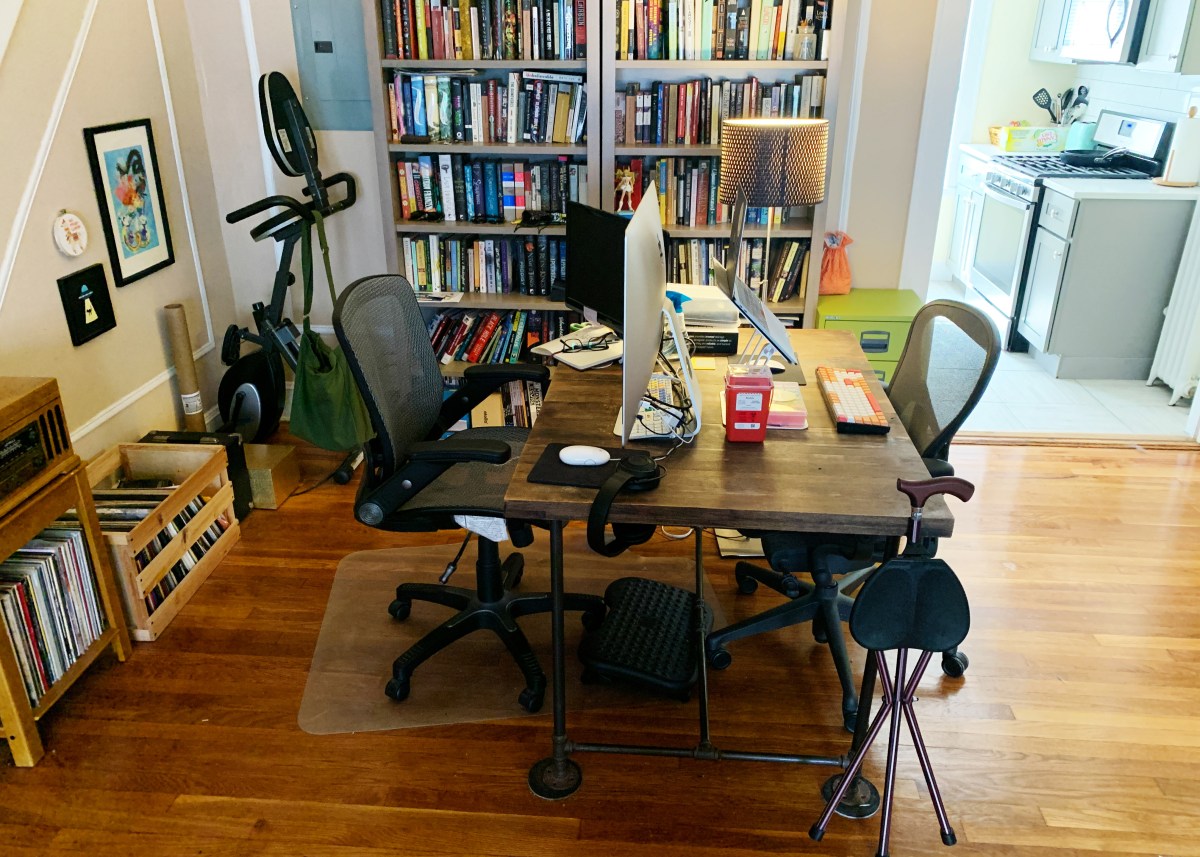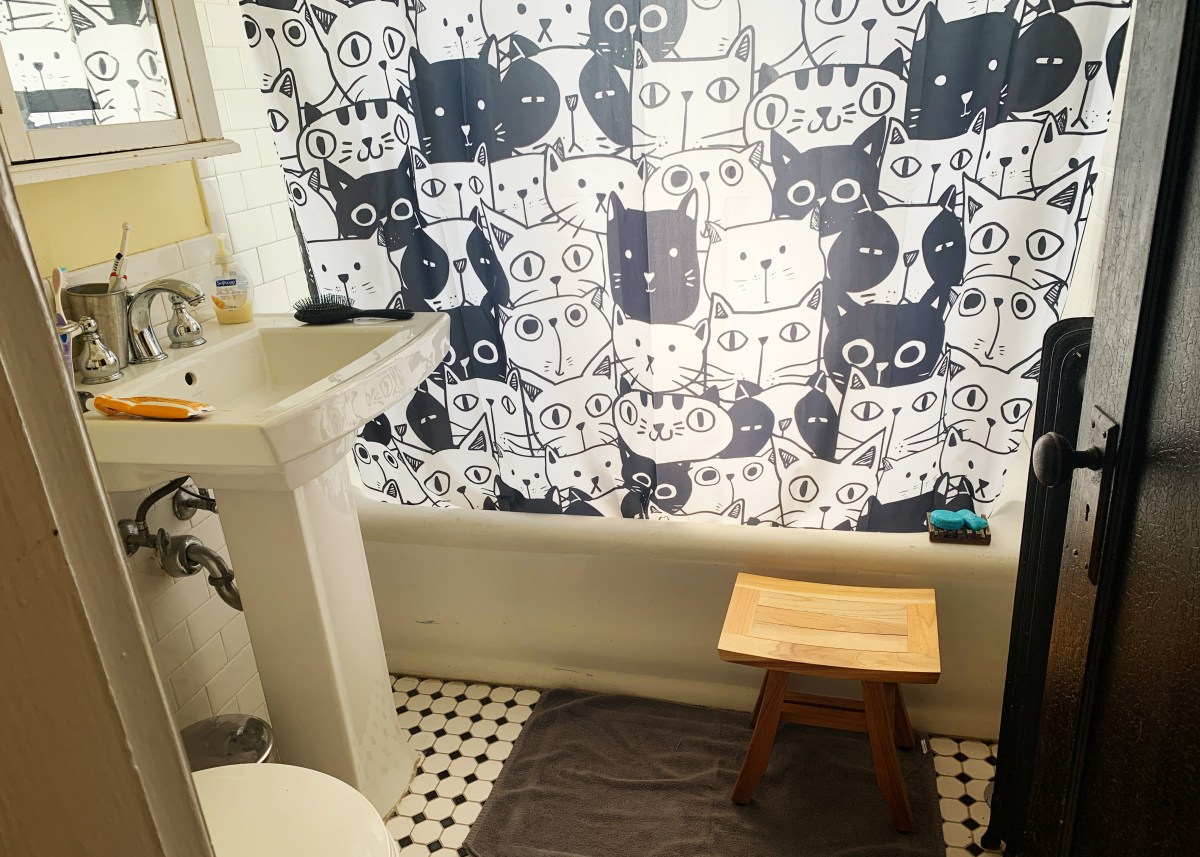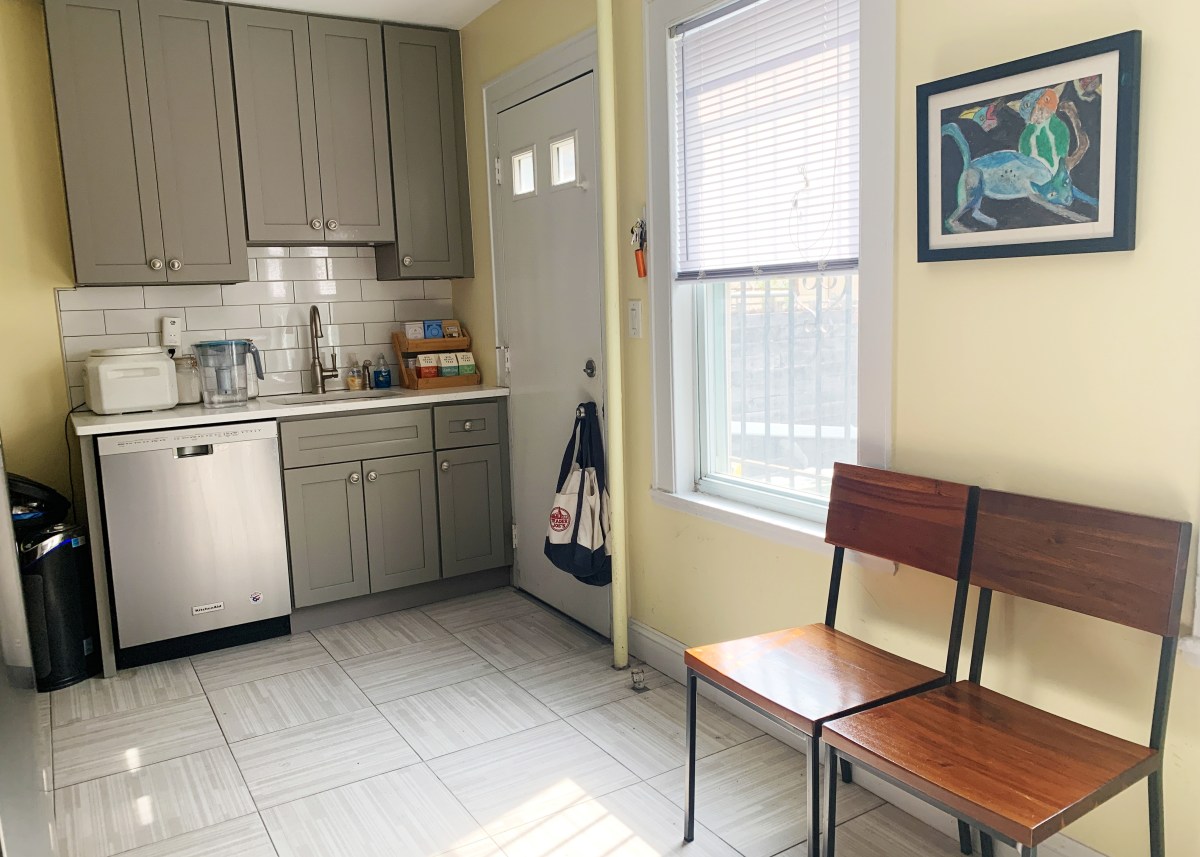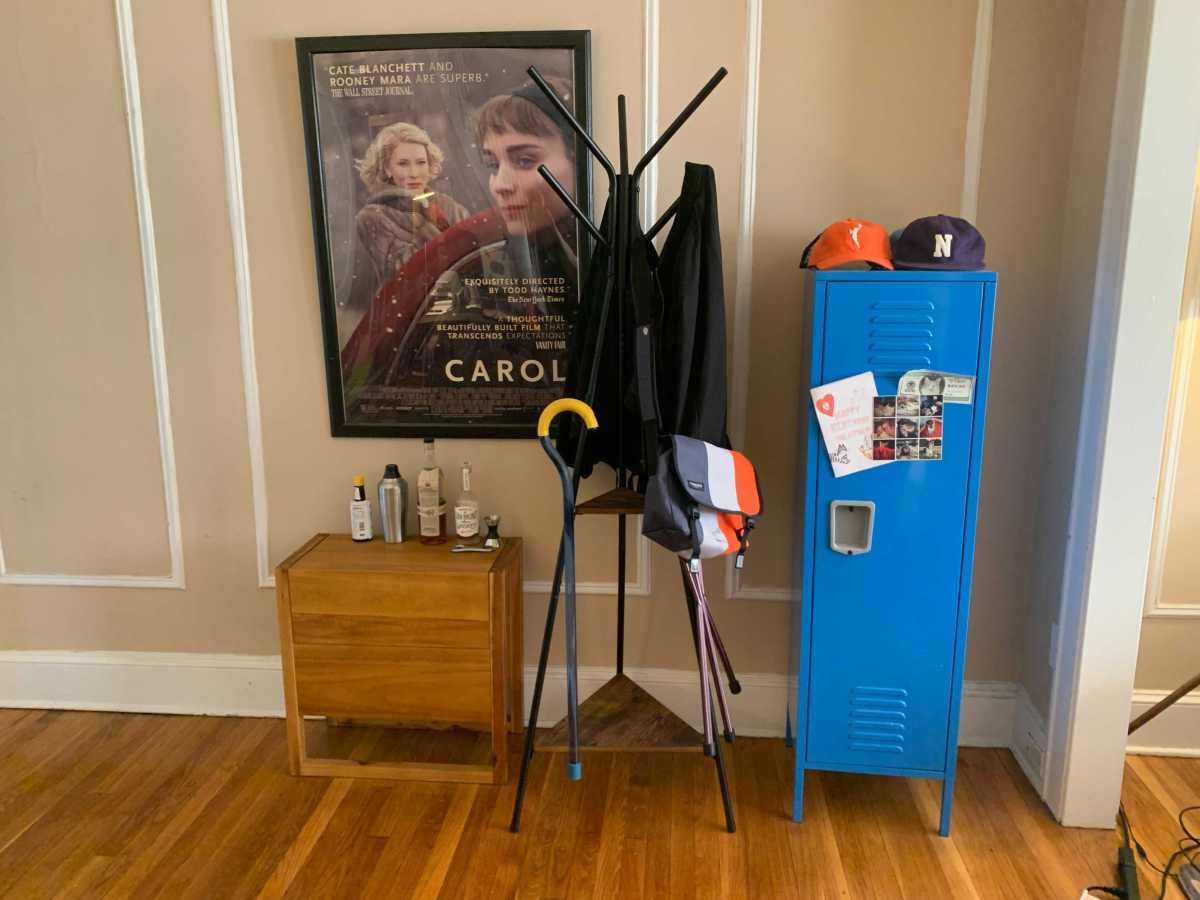Spaces & Places is a three-week series focusing on the private and community areas we occupy, the ways we personalize them, and the meanings that we assign to them. Organized and edited by Meg Jones Wall.
One of the biggest arguments my wife, Stacy, and I ever got into was the night we negotiated moving my stuff into her place. Her stuff had been accumulating in her apartment in New York City since she’d moved here right after college. My stuff had been pared down and split between Goodwill, my grandparents’ basement, and the handful of boxes that’d made the trek north with me from my house in small town Georgia. We cried over inches of bedroom territory, huffed in and out of the room over suggestions from each other that we didn’t even use what the other person was demanding they needed within reach, shouted stories of our most sentimental possessions, and sat in opposite corners glaring at the floor for a ridiculous amount of time.
Because, of course, we weren’t actually fighting about physical space; we were drawing boundaries around who we’d been before we shared a lease; about our fear of losing ourselves, together, in a bedroom hardly big enough to fit a queen size bed; about the fact that neither of us had been at home in our homes growing up; and about all the things we were compromising and promising to each other with each shift of a shoe rack or a dresser.
It’s funny for me to think about that now, all these years later, because today our house looks like someone ran both of our personalities through a paper shredder and tossed around the confetti of our individual and combined hobbies and interests and accomplishments and senses of humor to decorate every room. From where I’m sitting in our bedroom right now, I can see framed prints of: The Golden Girls dressed as DC superheroes, our cats illustrated as elite athletes, all the flowers from Super Mario Bros., a rendering of Stacy’s favorite cassette tapes, and more baseball caps than you’ve ever seen in one place outside of a Lids store. You could follow the prints through the house and down the stairs and find: retro pop San Junipero, Peggy Olson on canvas, more drawings of our cats, abstract Adventure Time, Spirited Away, maps of the solar system, a positively enormous Carol movie poster, the poster for Stacy’s college band, and the poster for the first music video she professionally edited.
Or, well, that’s what I see. Over the last 16 months, I’ve become increasingly convinced that’s not what you’d notice if you visited my house at all. Where I see modern industrial furniture, reclaimed wood and old pipes lovingly crafted and reverently chosen at the Brooklyn Flea Market, I worry all you’d see is walking canes propped against walls. Where I see pops of 60s color and style — a chartreuse armchair and orange waist-high filing cabinet — I worry all you’d see is my blood red sharps containers placed in convenient locations for the intramuscular shots I have to give myself every day. Where I see a black and white shower curtain with two dozen styles of cats Tetris-ed together, I flinch at the thought of you glancing into my bathroom and seeing only the stool I have to use to take showers and sit on to wash my face and brush my teeth every morning and night.


We designed our home for the able-bodied me, and now I’m the disabled me, and I need help walking, more places to sit where I used to stand, and options to carry out most of my daily tasks — including working — while lying down.
It was Stacy who noticed my self-consciousness about the ways we made our space more accessible. I used to take one or two (max) photos of something before I shared it on the internet, but after I got sick, I started taking dozens of photos. I’d snap a few, check to see if any mobility aids or other glaring disability devices were in the background (and they always were), move them out of the frame, and take the photos again. If that wasn’t possible, I’d move the photo to an entirely different place in the house. Same for Zoom calls, even if they were with the doctors who treat the disorders that cause my disabilities; or FaceTime, even if it was with my family. Room Rater made it so much worse; every time a tweet came across my timeline grading someone’s Zoom background, I found myself literally looking over my shoulder to see if, like, my sleeping ramp was visible.
It wasn’t an unfamiliar feeling — a mix of insecurity and uncertainty, fear and shame — but I hadn’t felt it in a very, very long time. In fact, the first time I felt it was when AJ Johnson, the most popular boy in second grade, the spelling bee and kickball champion, asked me to be his girlfriend in front of the whole class. I said, “No!” which seemed too harsh, so I repeated myself and said, “No, thank you!” and, then, to soften the blow even further, and because I’d been watching a lot of British period dramas after Sesame Street, I added, “No, thank you, my good man!” Then I had the idea that I could let AJ know it wasn’t personal while warning off anyone else in class. “No good men!” I announced. “Never!” I was already the weirdest kid at school, and I knew there was something different about me, and I knew the other kids sensed it too. I also knew I had to figure it out before they did, so I could get my feelings settled on it to protect myself from their feelings, which were inevitably not going to be good news. Rejecting AJ Johnson got all of us one step closer to figuring it out.
That’s how I feel about anyone seeing proof of my disabilities before I’ve wrapped my head around the fact of the disabilities: like I’ve reached a fragile peace with it, and any harsh comment, any misguided sentiment, any gawking could wreck my growing understanding and acceptance of how much I’ve changed.
My wife, and a few close friends, are the ones who have facilitated my delicate truce with my body. It started with a second chair in the kitchen. I had to put the first one in there to sit on while I chop vegetables, wait for my tea to steep, microwave leftovers, rest while doing dishes, and tidy up the fridge. One day Stacy brought a second chair into the kitchen and sat it beside the first one, and she started sitting beside me and chatting while I prepped fruit for smoothies, sitting beside me and resting her head on my shoulder while our morning coffee brewed, sitting beside me and pressing her knee against my knee while the pasta boiled. Then she positioned them directly in the morning sunbeam, so when she’s not sitting with me, there’s always a cat there to keep me company. The kitchen chair went from a seat of defeat to just another place our family hangs out together.

When that was a success, Stacy bought me a new shower chair. I’d thrown 15 dollars at a flimsy plastic and aluminum metal-looking thing when my cardiologist told me I needed to give up standing in the shower. It looked like cheap hospital equipment in a room I used to love to relax in. I hated showers and I didn’t even want to take baths anymore. I despised that stool. And so Stacy made the investment in a hand-crafted spa-type shower stool made by a woman-owned small business. Suddenly my naked bum was cozied up on a sturdy rustic pine bench, and sitting in the shower felt like a luxury, instead of a punishment. But there was a catch to that plan: If I was going to be comfortable spending money on quality accessibility furniture, I was going to have to come to grips with the fact that my disability wasn’t going anywhere. The main reason every disability thing in our house looked like it was a wobbly, hastily-constructed piece of furniture made from a pair of CVS crutches is because, well, it was. I bought it all begrudgingly, without even a bit of thought, in the hopes that I wouldn’t need to use it for very long. But it’s been a year now, and while I’m learning to manage better every day, my chronic illnesses are not going away. We followed the shower stool with a better bed set up for my work day, and a bright new bespoke cane.
My friend Valerie handed me one of my other biggest successes. She’s the only person in my family I’ve seen in real life, besides Stacy, since the pandemic began. The first time, we sat on my front stoop, all masked up. The second time, she came to my house to walk me to my polling place to vote, because it was too far for me to walk alone. When I stepped outside to meet her that morning, I was wearing compression socks pulled up to my knees, a cervical collar from my recent spinal surgery, and leaning on my cane. It was the first time anyone I loved had seen me like that in real life. I studied her for any sign of alarm, of fear, or even of pity. But her face lit up like it always does when we meet up on the sidewalk in New York City. She said, “Gooood morning!” and I kissed her on the forehead, through my mask. She walked right beside me the whole way, not a single step in front of me, and when we talked about my cane it was because she was complimenting it, because it is cool, because it looks like a cobalt blue lightsaber with a mustard handle. And we hardly talked about my cane, because when Valerie and I are together we always just pick back up on whatever it was we were talking about last, in real life, or over text, or on Twitter, or Slack. I was a different person from the last time we walked somewhere together in the city, but our friendship hadn’t changed a bit. It was as comfortable and warm as a hug in a well-worn t-shirt, like always.

When I came home that day, I hung up my cane — for the first time — on the coat rack Stacy bought with little accessibility hooks on it. Like the way Thor hung up his hammer in Jane’s entryway the first time he visited her house. Like it was a tool that deserved a nice place to wait until I needed it again.
Because the thing is, of course, that my feelings about all the accessibility stuff aren’t really about the stuff at all; my feelings are about the disabilities themselves.
I’ve never been happier than I am in the house I share with my wife. It’s our place, and every space in it has been lovingly put together with each other and forever in mind, from the cushiness of our couch, to the way our books fit together, to the framed print of the popsicle teaching anatomy hanging over the light switch in the kitchen. What started with fleeting hope and buried fear and lots of tears has evolved into a shelter full of shared experience that has deepened our love beyond anything I believed possible. Being disabled has changed me, and some of the stuff inside my house, but it hasn’t changed my home.



welp, I really thought I was going to emerge from this article unscathed by the Heather Hogan Will Make You Cry (Every Time) Because She Is As Good A Person As She Is A Writer, Which Is To Say, Very Very Very Good effect. but then I got to the last line and all hope of not tearing up at this bus stop went out the window.
thanks for this beautiful piece ❤️
yup yup yup – very much all of this
You made it so much further than I did! <3
This was a stunning read <3
oh i love this so much!
I always love reading Heather’s articles. It’s a little insight into a long hauler’s experience, written so beautifully, and leaves me with such empathy. Thank you for sharing your story – you make this world a better place.
listen it’s a really cool cane
PS. i love you
“And so Stacy made the investment in a hand-crafted spa-type shower stool made by a woman-owned company.”
ok but you can’t say that and not include a link!!
I have a roommate with fibro, and our experiences have been very similar to yours in adjusting how our aesthetics meet her needs, and this was a nice read, ty for sharing
I would also like to know the company!
Thank you for sharing all this, and yeah that cane is extremely cool!
The second chair in the kitchen made me cry–so sweet! I really loved reading this.
I love this. Thank you Heather.
Really well-written and thoughtful piece, Heather. Thank you for sharing with us how your new accessibility needs are making your home different but not any less your home. I think the kitchen chairs are a beautiful touch personally! And your cane is absolutely fresh as hell. Stay fly, queen of AS personal essays <3
I love this.
The way that we can invest energy into our material spaces to best support what’s happening in our lives is so powerful. For me, the concept of home as habitat is critical. It can suck energy away from you, or give you what you need when you need it.
In our front yard, we’ve planted natives. Now I tell people, these plants are bird feeders. From my office window, I see all the bird and butterflies that call our yard part of their daily routine.
Heather this was so lovely, thank you for sharing. I have a very similar process with my own needs, especially what you said about feeling a fragile peace with them that can’t withstand any imperfect reactions just yet. You also helped me reflect on the differences and similarities between disabilities that have a clear cause and diagnosis vs disabilities that are more nebulous and self-described.
I really appreciate your thoughtful and well-written post, Heather. Your new accessibility needs make your home unique, but not any less yours. Thanks for sharing your story. To me, the chairs in the kitchen are a beautiful touch!
https://www.kucidesign.co.uk/brick-slips
I tell you you’re the best of all of these….love your style. THANK YOU!!
In my opinion, the functionality of your space is the most important thing. Sometimes simple little things can make a big difference in the chaos in your home or just help you stay organized. For the nursery, I recently bought these storage boxes https://www.piccolo-house.com/product-category/accessories/kids-toys-storage-cube/ which have now organized all the children’s toys
i have a lot of flimsy walgreens devices and a fear of meeting anyone who only knew me before i was visibly disabled. my ex was the one who wanted to “keep up appearances” — thank you & your wife for proving that a better way of loving is real